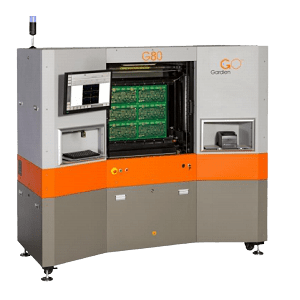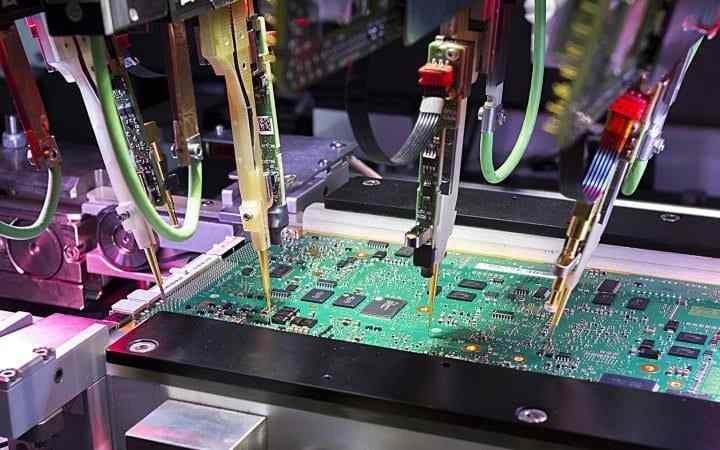Manufacturing PCBs can be a tricky business, to say the least. When it comes to accurately testing boards, it is crucial to ensure that your manufacturer is using cutting-edge technology.
Flying Probe Tests, otherwise known as fixtureless in-circuit tests (FICT) are an excellent way to test low to mid-volume production and prototypes. When it comes to quick-turn projects, Aurora Circuits utilizes our in-house flying probe machine to ensure efficiency.
Traditional electrical tests for PCBs require custom-tailored test fixtures to hold the boards in place while pins make contact. Flying probe tests on the other hand use software instruction to maneuver mechanical probes along with the board. This two-axis system is electro-mechanically controlled to access components on the boards. While both tests are looking for shorts and open on the PCB, the flying probe tests can have both benefits and drawbacks to PCB manufacturers – all depending on each board’s design and requirements.
Advantages of Flying Probe Test:
- Eliminates fixture costs and time.
– The estimated cost of a “bed-of-nails” fixture for a standard electrical test is roughly $300 per revision. - Fast test program development, easy integration of design changes.
– When PCB design changes, this can easily be adjusted in the flying probe’s testing software. - Controlled probe contact, programmable for any type of board.
- Different test solutions and approaches are integrated into a single test system.
- Circuit access, even in the absence of test points.
– As technology advances, testing processes have proven more challenging as board designs are becoming more complex and compact – resulting in fewer access points. - Intrinsic positioning and measurement precision.
– Flying probe tests can use targets as small as 80um or 3.2mils for net access.
Disadvantages of Flying Probe Test:
- Not an ideal option when it comes to testing mass quantities or larger production boards.
– This can result in an increased price per unit. - Testing can take longer periods in some situations.
- Flying probes test fewer points at one time, while “bed-of-nails” fixtures take measurements all at once.
– A test that can take 30 seconds on a standard ET fixture may take up to an hour on a flying probe.
Manufacturer Considerations:
When it’s all said and done, your PCB manufacturer will know exactly which test is suitable for your boards. Although there are more detailed requirements, the most basic components engineers and designers will look at are;
- Production volume.
- Lead time and budget.
- The complexity of the boards.

For more information about Aurora Circuits capabilities, please visit our website at
www.auroracircuits.com/soultions.
You may also contact us directly at contact@auroracircuits.com or via phone at (630) 978-3830.





